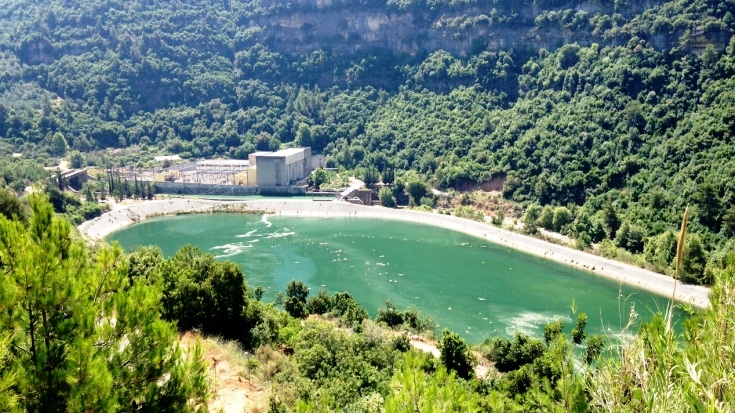“Water, water, the water’s come!” shouted Umm Majd, as she leaned over her balcony to check if what she had just heard really was water trickling in through the pipes. She and her neighbors rushed into their apartments to fill bathtubs and whatever containers they could find before the water went off again. Not a single drop had reached her home for eight days.
If there is one thing the Lebanese agree on, it is how bad the water situation is. Even electricity (which also suffers cuts) is mostly mentioned in the context of whether the power will be on when the water comes back—to run the washing machine, for example, or enable private tankers to pump water up into roof-top tanks.
Ahmad Sbeity, a grocer in Beirut, can’t understand how a country like Lebanon—known for its rivers and springs—can be so short on water. He says he pays about US$1,200 for tanker water a year, and an additional US$600 for bottled drinking water. Added to that, the US$170 yearly flat fee per household for the municipal water supply, and Ahmad is spending a considerable part of his income on the most basic need of getting water into his home.
For years, Lebanon struggled with water shortages in the summer and fall but, in 2014, the combination of a particularly severe drought and the strain more than a million Syrian refugees were placing on Lebanon’s infrastructure, made the problem more acute. Lebanon stores-up only six percent of its fresh water supplies, though the Middle East and North Africa region’s average is much higher than that. As a result, a significant portion of Lebanon’s fresh water supply is lost.
Compounding the problem in the long-term, are the estimated 20,000 illegal wells or boreholes operational in the Greater Beirut area, most supplying private water tankers and, simultaneously, depleting underground water reserves. Nabil, who operates a water tanker, hesitates to reply where the water he is filling the tanks of a Beirut apartment building with, comes from. Those who can afford bottled water, drink it. The half million or so people who live on less than US$4 a day, boil their water to reduce their risks from drinking dirty water.
To help tackle the water shortages faced by Lebanese consumers, the World Bank has approved its largest ever project in the country—a US$474 million loan to increase municipal water supplies. The Islamic Development Bank and the Government of Lebanon are also providing parallel financing (of US$128million and US$15million respectively), toward the total cost of US$617million.
The Water Supply Augmentation Project will target the Greater Beirut and Mount Lebanon Area, where half of Lebanon’s population of about 4 million lives. A dam will be constructed on the Bisri River in South Lebanon and will store 125 million cubic meters of water, filling up naturally in the winter and spring for use during the summer and fall. Water will flow to Beirut entirely by gravity and will not incur pumping costs through a 26-kilometer underground tunnel and be treated at a plant on the way.
The project’s implementing agency—the Council for Development and Reconstruction—set-up an international panel of experts on dam safety, which reviewed every aspect of the design, construction and operations. Some of the world’s most renowned experts in hydrology, seismology, and geology took part in the process.
In addition, Lebanese counterparts recognized the importance of environmental and social factors, with the government borrowing the funds to create a benefit-sharing program for communities impacted by the project.

